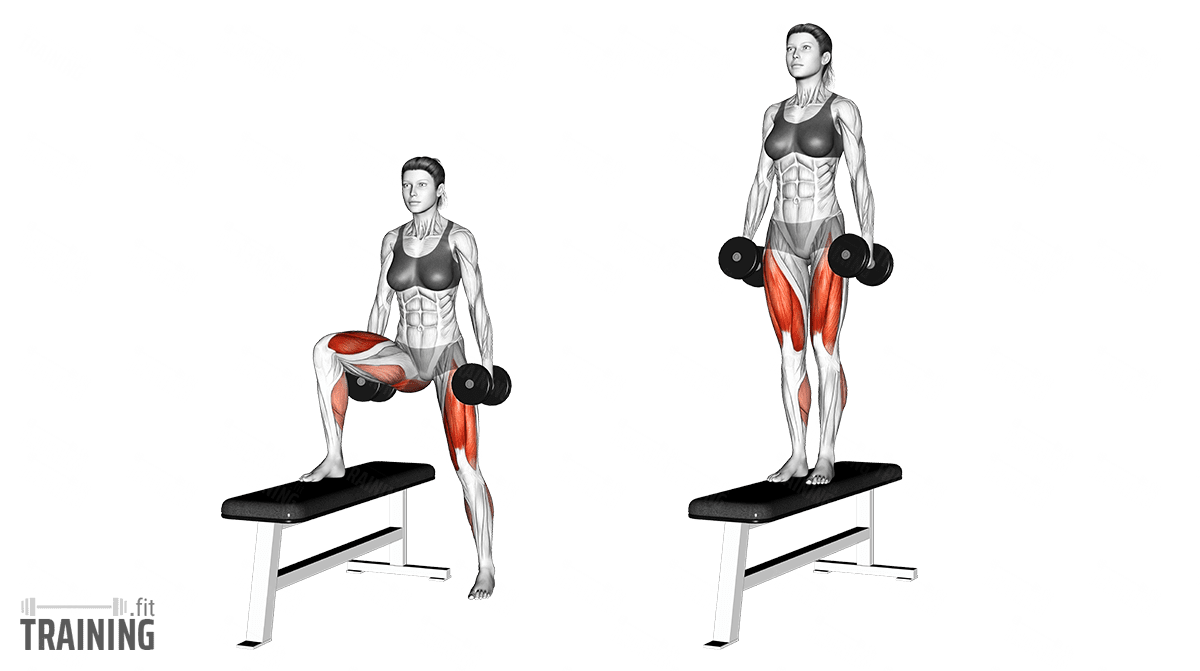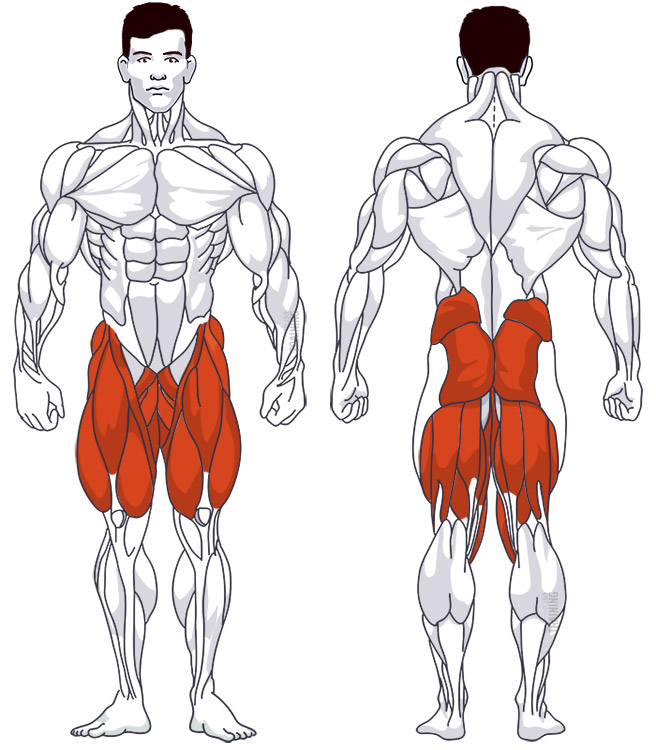Step-Ups Sideways, with Dumbbells
Compound exercise, Free weightsOverview

Main muscles
- Thigh: Long adductor muscle
(Musculus adductor longus) - Thigh: Quadriceps
(Musculus quadriceps femoris) - Thigh: Thigh flexor
(Musculus biceps femoris) - Buttocks: Large gluteus maximus
(Musculus gluteus maximus)
Training plans
Step-Ups Sideways, with Dumbbells is a suitable substitute for similar exercises in Thigh training or as a supplement to various training plans.
Step-Ups Sideways, with Dumbbells: Basics and alternatives

Involved main muscle groups:
Step-Ups Sideways, with Dumbbells
Sideways step-ups are a great way to train most of your leg muscles, including your butt and thighs. Unlike regular front step-ups, you’ll be stepping up sideways with dumbbells in your hands.
When compared to front step-ups, sideways step-ups help you target your inner thigh muscles more effectively. Even though the focus is slightly different, it’s still a compound exercise that works multiple muscle groups.
If you want to isolate your inner thighs even more, consider hip adduction. For a no-equipment alternative, try the side lunge.
You can perform this exercise with or without dumbbells, making it perfect for home workouts.
Correct execution
To do this exercise, you’ll need a stable, elevated surface to step onto. A flat bench, a large box designed for this purpose, or a stepper will work well. The height should be comfortable for you – not too low or too high, ideally around knee level.
The higher the step-up, the more challenging the exercise becomes. A higher surface also requires more stabilization and increases the risk of ankle injuries. So, make sure your chosen surface isn’t too high.
Video tutorial
Step-by-step instructions
Stand hip-width apart from the flat bench (or your chosen surface), with your feet parallel and dumbbells in your hands by your hips.
Place your training leg on the bench, ensuring your foot is centered to prevent slipping when you transfer your weight.
In the starting position, engage your core and keep your back straight. Your training leg should be bent, and your second leg extended.
Push your body up onto the bench using only your training leg. Keep your second leg extended and avoid using it for assistance.
At the top of the movement, bring your second leg next to the training leg, either placing it on the bench or hovering it briefly. Maintain tension in the training leg throughout the rep.
Reverse the movement to return to the starting position, touching the floor with your second leg without fully relieving the training leg.
Once you’ve completed the reps for one leg, switch sides and repeat with the other leg, ensuring equal repetitions.
Common mistakes and injuries
Position yourself safely next to the surface you’re stepping onto, with your feet side by side and your second leg neither behind nor in front of your training leg.
Take each step mindfully and avoid rushing the exercise, as carelessness can lead to ankle injuries. Focus on stability and move at a comfortable pace.
Lastly, ensure you’re using only your training leg to step up. Avoid pushing off the ground with your second leg, as this makes the exercise easier and less effective.